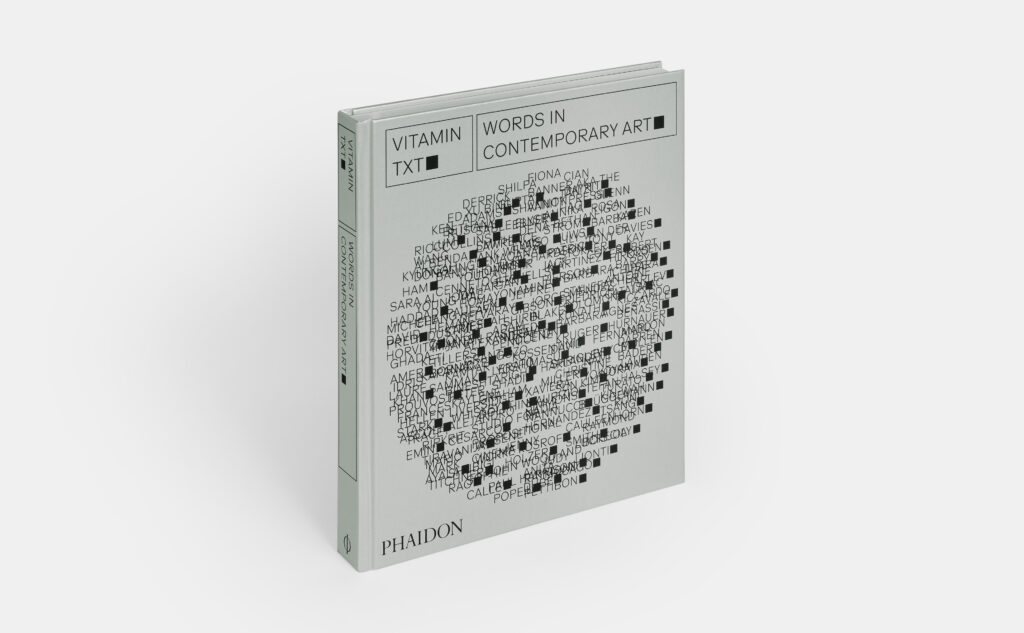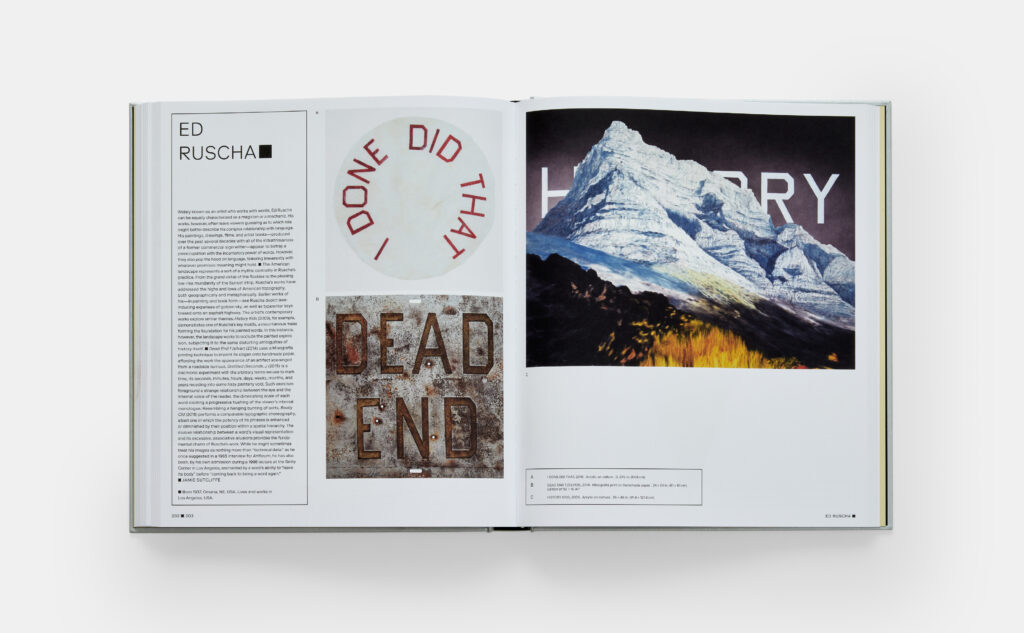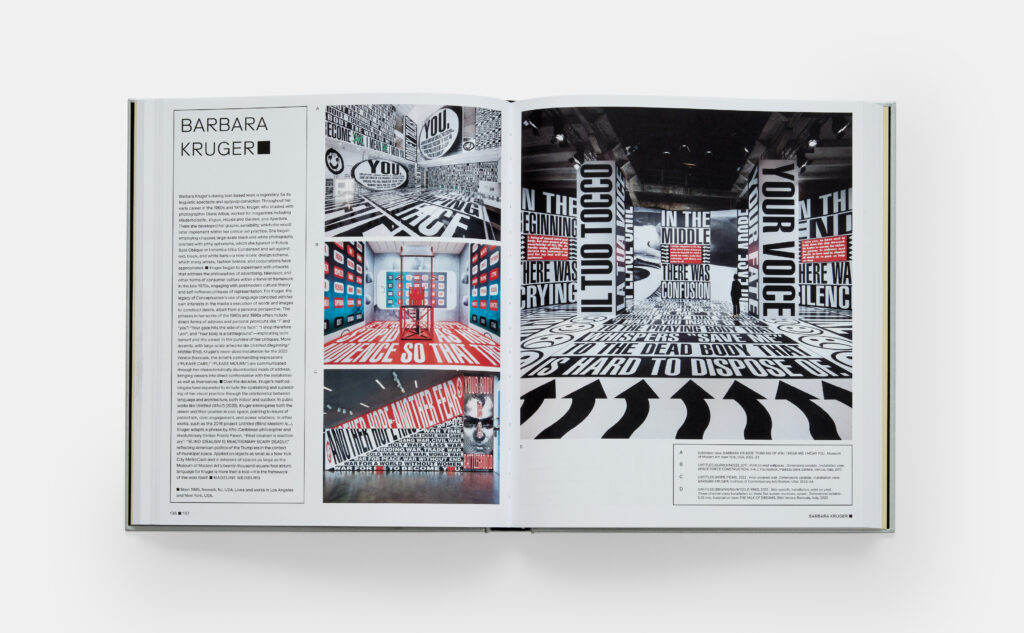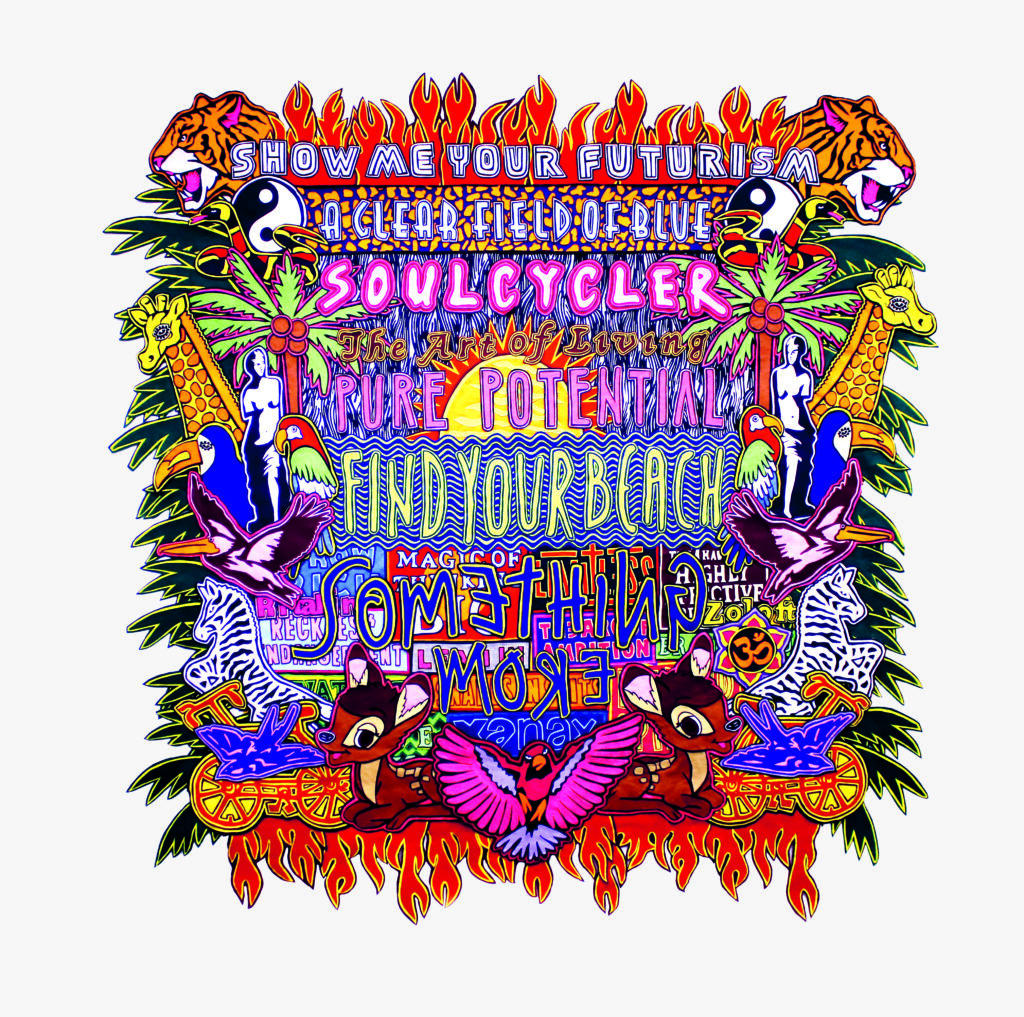5 Reasons to Take Part in Wrocław Off Gallery Weekend
Wrocław Off Gallery Weekend is a unique event that is organized in Wrocław, Poland on the October 18–20, 2024. It networks and unites various...
Guest Profile 16 October 2024
The latest volume in the acclaimed Vitamin series, Vitamin Txt: Words in Contemporary Art, is a global survey of today’s most innovative artists working with text.
In the realm of artistic expression, we often narrow our focus to visual elements and overlook the profound impact of words within artworks. However, written language has played a central role in various forms of expression throughout history. From ancient Egyptian hieroglyphics to medieval cartouches and inscriptions in religious art, contemporary art makes no exception. Throughout the modern day words hold significant sway, serving not only to enrich visual compositions but also as the central theme of many artists’ practices.

Tim Etchells, The Show, 2020. Machine-cut plywood. 26 ft. 3 in. × 30 ft. 10 in. (8 × 9.4 m). Installation view: Landwiese, Zurich, Switzerland. Picture credit: artwork © and courtesy the artist / Photo: Philip Schaub. Commissioned for Spektakel, Zurich.
To analyze this phenomenon, Phaidon’s new volume, Vitamin Txt: Words in Contemporary Art, delves into this fascinating intersection, presenting a selection of artists working across all sorts of media. The book marks the 11th volume of the acclaimed Vitamin series, each featuring the most prominent living artists working within a specific medium or material.
Nonetheless, this volume marks a departure from the series’ traditional focus on specific mediums or materials, instead zooming in on the theme of words and texts. This ground-breaking volume celebrates 103 living artists and collectives from 34 countries through their text- and word-based practices through a culmination of more than 500 images. The book results from the careful selection and curation of an esteemed panel of academics, writers, curators, and critics who lent their expertise to offer a broad spectrum of visual experimentation.
From established masters to emerging talents, Phaidon’s Vitamin Txt showcases the breadth of artists exploring the fusion of visual and textual elements.
The book provides in-depth analyses of their work, while also allowing the readers to investigate the impact of texts not only on more traditional media, such as painting and photography, but also on digital art, installations, textile works, and performances, just to name a few.
Inside the book there is a large representation of artists inserting words, texts, and other textual elements in their paintings, from Ed Ruscha and Tracey Emin to Alexandra Grant and David Shrigley, to younger artists such as Kyungah Ham or Kamyar Bineshtarigh.
Another stable presence is that of textile works, ranging from Rirkrit Tiravanija’s flags to Lucrecia Lionti’s wall hangings, Lawrence Lemaoana embroideries, or Nadia Hernández’s large-scale textile installations.
There are also neons, prints, murals, performances, screens, beaded sculptures, or small drawings and Post-it notes, all attesting to the pervasiveness of words in contemporary art.

Vitamin Txt: Words in Contemporary Art. Introduction by Evan Moffitt. Phaidon 2024.

Vitamin Txt: Words in Contemporary Art. Introduction by Evan Moffitt. Phaidon 2024.

Vitamin Txt: Words in Contemporary Art. Introduction by Evan Moffitt. Phaidon 2024.
As the book’s curator Evan Moffitt explains in the insightful introduction, words have always been considered a form of art. In medieval Christian Europe, manuscripts presented beautifully ornate letters, while in the Islamic culture, where idolatry is forbidden by the Quran, words have always represented a form of visual art, adorning mosques and functioning as decorative pieces of art. In China, moreover, calligraphy is one of the most widely appreciated forms of traditional art, practiced and honed from ancient times.
From the moment ancient Sumerians used the image of an ox to represent a sound, text and image have served related semiotic functions. How, then, in our contemporary era, did we come to consider them so separable?
Introduction. Vitamin Txt: Words in Contemporary Art, Phaidon 2024.
At the turn of the 20th Century, Avantgarde movements and artists recognized the revolutionary potential of text to challenge traditional artistic categories and started to apply it to their work in a more systemic way. Figures like Pablo Picasso, Georges Braque, and Hannah Höch pioneered the incorporation of text, particularly newsprint, reflecting the spirit of modern life.

Jody Paulsen, Soul Cycler, 2018. Felt collage. 104 × 104 3/4 in. (264 × 266 cm). Picture credit: artwork © and courtesy of the artist / SMAC Gallery.
Vitamin Txt builds upon this legacy, showcasing artists who use words to convey social and political messages or to explore the aesthetic qualities of letters and typography. The book offers a captivating blend of depth and style, providing a diverse array of perspectives on the role of text in contemporary art. With its thematic focus, the book surprises and subverts expectations, offering a cross-disciplinary exploration of today’s art world.
Get a copy of Vitamin Txt: Words in Contemporary Art on the publisher’s website.
DailyArt Magazine needs your support. Every contribution, however big or small, is very valuable for our future. Thanks to it, we will be able to sustain and grow the Magazine. Thank you for your help!